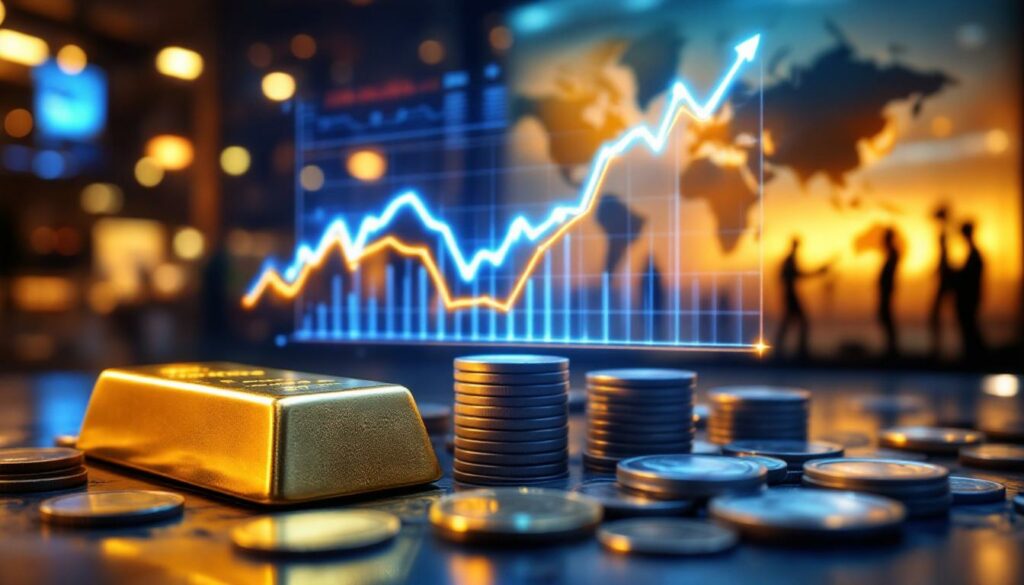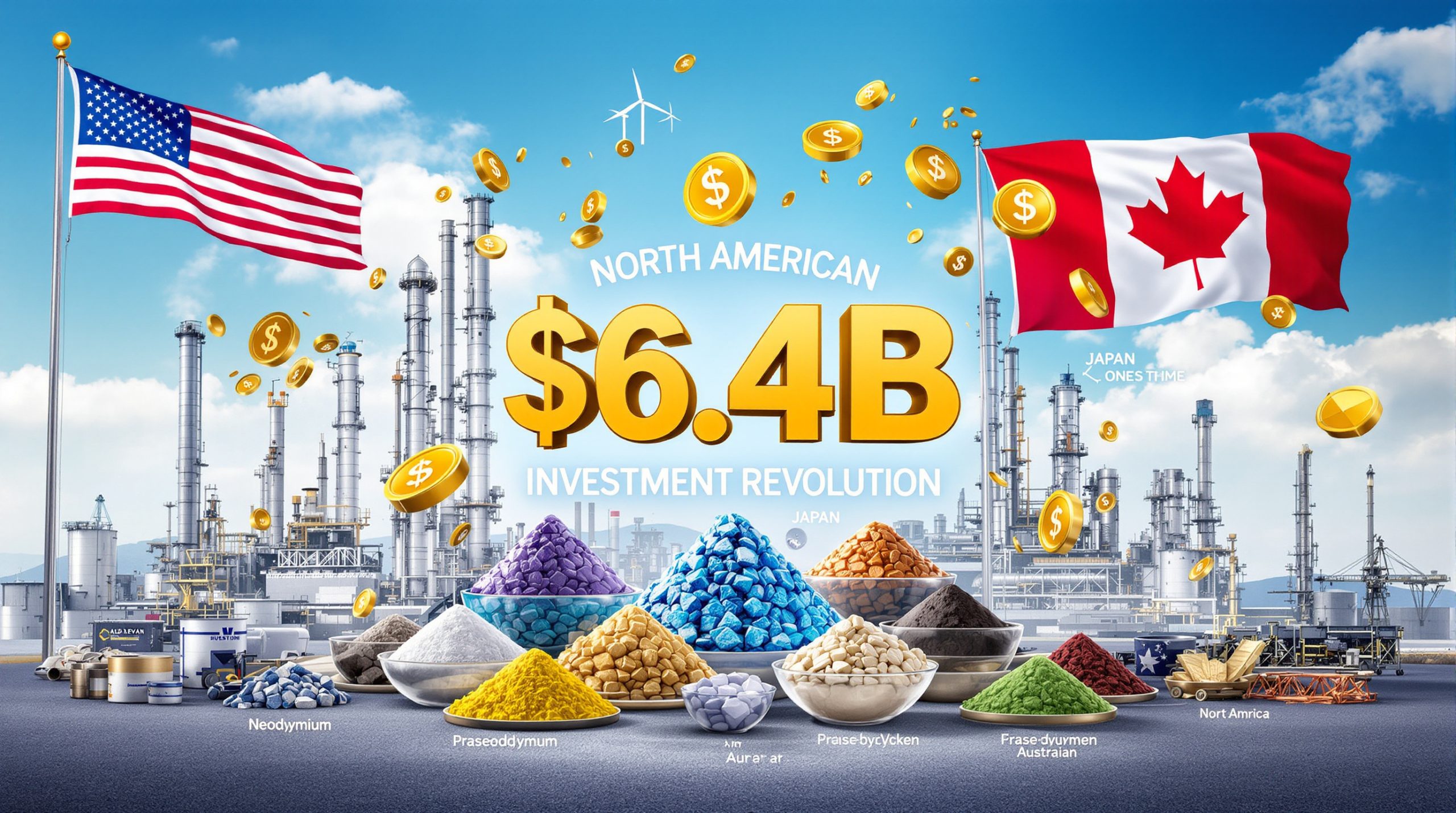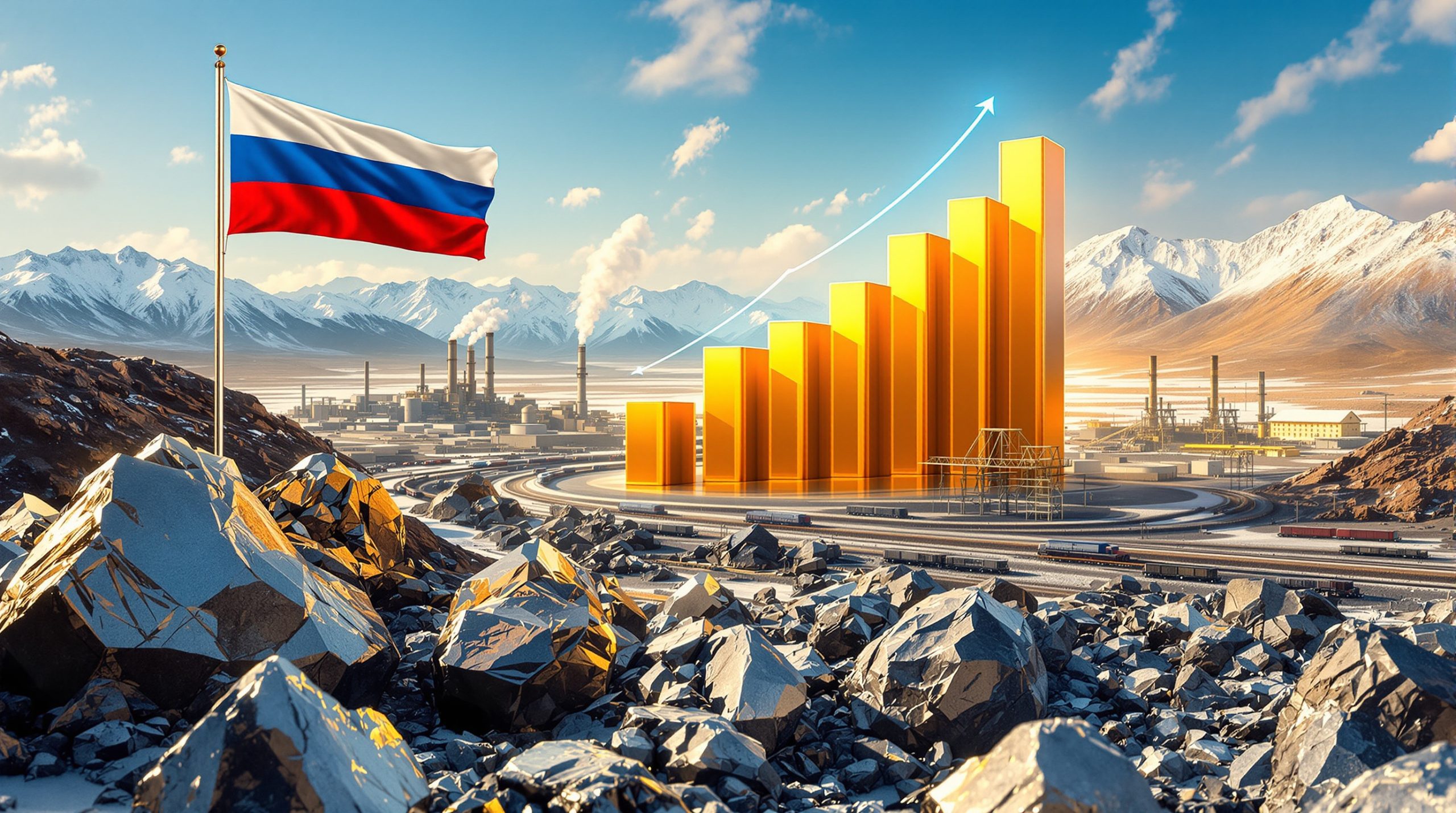What Is the Gold-to-Silver Ratio?
The gold-to-silver ratio measures how many ounces of silver it takes to purchase one ounce of gold. This metric has been used for centuries as a key indicator of relative value between these two precious metals. As of June 2025, the ratio stands at approximately 90, which represents a significant decrease from recent peaks but remains well above historical averages.
Historical data shows remarkable fluctuations in this ratio. During the 2020 pandemic, the gold-to-silver ratio reached an extraordinary peak of 123—the highest level in modern history. This extreme deviation underscored the profound economic uncertainty of that period, with investors flocking to gold's perceived safety while silver's industrial demand suffered amid manufacturing shutdowns.
"Recently, the SHFE/LME price ratio has continued to recover to around 90, but it remains at a relatively high level, indicating that silver prices are undervalued relative to gold prices." – Huishang Futures (SMM, June 25, 2025)
The long-term average for the gold-to-silver ratio analysis typically ranges between 60-70, making the current level of 90 notably elevated. This deviation from historical norms creates potential opportunities for strategic investors who understand its significance.
Why This Ratio Matters to Investors
The gold-to-silver ratio serves as a critical valuation metric for precious metals investors. When the ratio rises significantly above historical averages (as it is now), it suggests silver may be undervalued relative to gold—potentially signaling an opportunity to increase silver allocation.
Investors use this ratio for multiple strategic purposes:
- Rotation timing: Identifying optimal moments to shift between gold and silver positions
- Entry/exit signals: Using extreme ratio levels as potential contrarian indicators
- Portfolio rebalancing: Adjusting precious metals weightings based on relative valuations
- Market sentiment gauge: Understanding broader risk perception in financial markets
The ratio's practicality extends beyond theory—many institutional investors actively employ ratio-based strategies. When the ratio reaches extreme levels (typically above 80), they often initiate positions expecting mean reversion, essentially betting that silver will outperform gold as the ratio normalizes.
For retail investors, monitoring this ratio provides a framework for making more informed decisions about precious metals allocations without requiring sophisticated market timing techniques.
Current Market Dynamics Affecting Precious Metals
The precious metals market is currently influenced by a complex interplay of geopolitical tensions, economic indicators, and central bank policies—creating a uniquely volatile environment for gold and silver investments.
Geopolitical Tensions Driving Risk Aversion
Global geopolitical conflicts have intensified in recent months, with the Israel-Iran standoff escalating dramatically. The collapse of the sixth round of US-Iran negotiations has further destabilized the Middle East, creating persistent uncertainty that typically benefits safe-haven assets like gold.
These tensions have directly contributed to declining risk appetite among investors globally, with equity markets experiencing significant volatility. The flight to safety has strengthened gold's appeal despite high interest rates that would normally pressure non-yielding assets.
Of particular concern is the potential for disruption to oil shipments through the Strait of Hormuz, a scenario that would simultaneously drive inflation (positive for gold) while hampering industrial production (negative for silver's industrial demand component).
The uncertainty surrounding these conflicts appears unlikely to resolve in the near term, creating a sustained tailwind for precious metals prices—especially gold, which historically outperforms during periods of geopolitical instability.
Trade Policy Uncertainties
Trade tensions have reemerged as a significant market factor, with the Trump administration's "reciprocal" tariff policies approaching a critical deadline on July 9, 2025. This 90-day suspension period ending creates substantial uncertainty for global markets.
Progress in trade negotiations has been notably limited:
- Only the UK has secured a formal trade agreement with the US
- China-US economic consultations in London (June 9-10, 2025) showed promise but produced no binding agreement
- Japan has signaled a deliberate approach to negotiations
"Japanese Prime Minister Shigeru Ishiba reiterated that Japan is not in a hurry to reach a trade agreement with the US. Japan welcomes progress […] but will not sacrifice national interests for the sake of a quick agreement." – Huishang Futures (SMM, June 25, 2025)
The implementation of broad US economy tariffs would likely have multiple effects on precious metals:
- Potential inflationary pressure (positive for gold and silver as inflation hedges)
- Possible manufacturing slowdown (negative for silver's industrial demand)
- Increased economic uncertainty (positive for gold's safe-haven appeal)
Investors should monitor developments closely as the July 9 deadline approaches, as the market has not fully priced in potential outcomes.
How Are US Economic Indicators Influencing Gold Prices?
The complex relationship between macroeconomic data and precious metals prices creates both challenges and opportunities for investors navigating this market segment.
Inflation Trends and Federal Reserve Policy
Recent inflation data shows a nuanced picture that has significant implications for precious metals. The May 2025 US Consumer Price Index (CPI) increased 2.4% year-over-year, slightly above April's 2.3% but with monthly growth slowing to just 0.1% (below expectations of 0.2%).
Core CPI, which excludes volatile food and energy prices, rose 2.8% annually—coming in below market expectations of 2.9%. This suggests underlying inflationary pressures may be moderating despite headline figures.
Several specific components within the CPI report merit attention:
- Energy prices: Declined 1% month-over-month, providing relief to consumers
- Housing costs: Rose just 0.3% monthly, marking the slowest growth since 2021
- Services inflation: Remained elevated at 3.9% annually, but showed signs of moderation
Perhaps most significantly, consumer inflation expectations have improved dramatically. The one-year inflation expectation metric plunged from 6.6% to 5.1%, while long-term expectations edged down to 4.1% from 4.2%. This psychological shift is critical for the Federal Reserve's policy considerations.
US consumer confidence has also improved for the first time in six months, suggesting households may be adapting to higher price levels while becoming more optimistic about future economic conditions.
Federal Reserve's Interest Rate Outlook
Market expectations for Federal Reserve policy have shifted substantially in response to recent economic data. Current pricing indicates the Fed will likely maintain rates at the June 2025 meeting, but the probability of a September rate cut has increased significantly.
Investors are closely monitoring the Fed's upcoming economic projections and dot plot, which will provide crucial insights into policymakers' rate expectations for the remainder of 2025 and beyond.
The relationship between interest rates and precious metals is fundamental:
- Lower rates reduce the opportunity cost of holding non-interest-bearing assets like gold and silver
- Rate cuts often coincide with dollar weakness, which typically supports higher gold price forecast in USD terms
- Monetary easing cycles historically benefit precious metals as investors seek inflation protection
The anticipated shift toward monetary easing would likely provide continued support for gold prices, particularly if geopolitical tensions persist. However, the pace and magnitude of rate cuts will be data-dependent, creating potential volatility as economic indicators are released.
Understanding the SHFE/LME Price Ratio Recovery
The relationship between Shanghai Futures Exchange (SHFE) and London Metal Exchange (LME) prices provides valuable insights into global precious metals market dynamics and relative valuations.
Current Ratio Analysis
The SHFE/LME price ratio for gold and silver has recovered significantly from recent highs, dropping to approximately 90 from peaks around 105. While this represents substantial normalization, the current level remains well above the long-term average of 60-70.
This elevated ratio continues to indicate relative undervaluation of silver compared to gold, creating potential opportunities for investors. The persistence of an above-average ratio despite recent silver strength suggests further mean reversion may occur.
Institutional investors often use this ratio as a tactical signal, with many funds establishing positions to "short the ratio"—essentially betting on silver outperformance relative to gold when the ratio reaches extreme levels.
A historical perspective on the ratio reveals three key observations:
- Mean reversion tendency: The ratio typically reverts toward its average range (60-70) over time
- Crisis-driven spikes: Extreme ratio readings often coincide with financial or economic crises
- Asymmetric reversions: Ratio normalization typically occurs through silver outperformance rather than gold weakness
These patterns create potential opportunities for tactical positioning based on ratio extremes.
Drivers Behind Recent Silver Price Strength
Silver's recent price strength, which has driven the ratio normalization, stems from several interconnected factors:
"Silver has greater upward price elasticity during a US Fed interest rate cut cycle […] Funds often shift to silver, which has a lower valuation and higher elasticity, to capture catch-up gains." – Huishang Futures (SMM, June 25, 2025)
Silver's dual nature as both an industrial and investment metal creates unique price dynamics. While gold responds primarily to monetary factors and risk sentiment, silver also reacts to industrial demand trends, creating greater price elasticity.
The anticipation of Federal Reserve rate cuts has reduced the opportunity cost for holding non-interest-bearing assets, benefiting both metals but with an amplified effect on silver due to its historically higher volatility.
Institutional fund rotation has also played a significant role. After periods of gold outperformance, large investors often shift allocation toward silver to capture potential "catch-up" gains—a pattern currently unfolding as the ratio normalizes.
Additionally, fluctuations in US dollar credit availability resulting from divergent Federal Reserve policies have supported precious metals broadly, with silver capturing disproportionate benefits due to its higher beta characteristics.
Medium to Long-Term Investment Outlook for Gold
The confluence of monetary policy shifts, persistent geopolitical tensions, and evolving trade relationships creates a complex but generally supportive environment for gold investment.
Bullish Case for Gold
The medium to long-term outlook for the gold-to-silver ratio and investment outlook for gold remains constructive, supported by several fundamental drivers:
- Federal Reserve policy trajectory: Strong likelihood of interest rate cuts in coming quarters, reducing opportunity costs for holding gold
- Persistent geopolitical tensions: Major power rivalries showing "no substantial easing," maintaining safe-haven demand
- Potential economic headwinds: Possible pressure from implemented tariff policies, which historically benefit gold
- Portfolio diversification trends: Increasing institutional allocation to gold as a core diversifying asset
"The medium and long-term upward trend of gold as a core allocation asset remains unchanged." – Huishang Futures (SMM, June 25, 2025)
Historical precedent suggests that gold typically performs well during periods of monetary easing, particularly when combined with geopolitical uncertainty. The current environment checks both boxes, creating a supportive backdrop for gold prices.
Institutional positioning further reinforces this outlook, with increased allocation to gold across various investor categories—from central banks diversifying reserves to pension funds seeking non-correlated assets and hedge funds positioning for monetary policy shifts.
Key Factors to Monitor
Despite the generally bullish outlook, several factors require close monitoring as they could significantly impact gold's performance:
- Tariff policy implementation: The impact of "reciprocal" tariffs on US economic indicators will become apparent in "the next few months," potentially influencing Fed policy and gold demand
- Economic data evolution: Employment, inflation, and growth metrics will shape the Fed's policy path, with implications for gold
- Geopolitical developments: Escalation or resolution of major conflicts could dramatically shift risk perception
- Technical market positioning: Extreme positioning in futures markets could create short-term volatility despite positive fundamentals
Investors should anticipate potential short-term price volatility driven by these factors, even within the context of a bullish medium-term outlook. This volatility may present strategic entry points for those seeking to build or increase gold exposure.
The impact of tariff policies on the US economy represents a particularly important variable. If these policies create inflationary pressure while hampering growth (stagflation), gold would likely benefit significantly. Conversely, if economic impacts prove minimal, gold's performance may depend more heavily on Fed policy and geopolitical developments.
Silver Investment Considerations
Silver's unique characteristics as both a precious and industrial metal create distinct investment dynamics compared to gold, offering both enhanced opportunity and elevated risk.
Strategic Opportunities in Silver
The current gold-to-silver ratio of approximately 90 suggests significant potential undervaluation of silver relative to gold, creating compelling opportunities for strategic investors. This elevated ratio provides a favorable entry point for those seeking exposure to silver's historically higher volatility and upside potential.
Silver typically demonstrates greater price elasticity during Federal Reserve easing cycles—a scenario currently unfolding as the market anticipates rate cuts. This characteristic creates potential for outsized percentage gains compared to gold if economic conditions and monetary policy evolve as expected.
"Attention should be paid to the inflection point of industrial demand, seizing wave opportunities." – Huishang Futures (SMM, June 25, 2025)
The industrial component of silver demand creates additional upside catalysts beyond monetary factors. Sectors including solar energy, electronics, and healthcare continue to expand their silver usage, potentially creating supply-demand imbalances that could accelerate price appreciation.
For investors seeking to capitalize on silver's potential:
- Ratio-based allocation strategies: Increasing silver exposure when the gold-to-silver ratio exceeds historical averages
- Cyclical positioning: Adding silver during early phases of Fed easing cycles
- Technical entry points: Using silver's higher volatility to establish positions during price corrections
- Industrial demand monitoring: Tracking key sectors (especially solar) for demand inflection points
These approaches can help maximize silver's potential while managing its inherent volatility.
Risk Factors for Silver Investors
While silver offers compelling upside potential, investors must recognize and manage several significant risk factors:
- Greater price volatility: Silver typically experiences more dramatic price swings than gold, requiring higher risk tolerance
- Industrial demand sensitivity: Economic slowdowns can significantly impact silver's industrial consumption
- Potential ratio persistence: The gold-to-silver ratio may remain elevated if economic uncertainties persist
- Technical market structure: Silver's smaller market size makes it vulnerable to positioning extremes and liquidity constraints
These characteristics necessitate continuous monitoring of Federal Reserve policy developments, economic indicators, and specific risk events that could impact silver prices.
Investors should consider silver's historical drawdown patterns, which tend to be more severe than gold during economic stress periods. This suggests potentially using smaller position sizes for silver compared to gold within a precious metals allocation strategy.
The optimal approach for many investors involves maintaining exposure to both metals, adjusting the relative weighting based on the gold-to-silver ratio and economic cycle positioning. Additionally, understanding various silver squeeze strategies can help investors maximize potential returns.
FAQ: Gold and Silver Investment Strategies
How Does the Gold-to-Silver Ratio Inform Investment Decisions?
The gold-to-silver ratio serves as a powerful tool for strategic investment decisions in precious metals. Historically, ratios above 80 have often signaled potential silver undervaluation, creating opportunities for investors to increase their silver allocation.
When implementing ratio-based strategies:
- Consider relative position sizing: Allocate larger portions to the seemingly undervalued metal
- Establish ratio thresholds: Define personal trigger points for reallocation (e.g., above 80 for increasing silver, below 60 for increasing gold)
- Implement gradually: Use dollar-cost averaging when the ratio approaches extremes rather than making all-or-nothing shifts
- Maintain diversification: Keep exposure to both metals, adjusting the proportion rather than completely abandoning either
Historical data shows that mean reversion of the ratio typically occurs, though timing can be unpredictable. This makes ratio-based strategies more suitable for medium to long-term investors rather than short-term traders.
What Economic Indicators Should Precious Metal Investors Monitor?
Successful precious metals investing requires vigilant monitoring of several key economic indicators that influence monetary policy and market sentiment:
-
Inflation metrics:
- Consumer Price Index (CPI) and core CPI
- Personal Consumption Expenditures (PCE) index (the Fed's preferred measure)
- Producer Price Index (PPI) for early inflation signals
-
Labor market data:
- Nonfarm payrolls and unemployment rate
- Average hourly earnings (wage inflation)
- Job openings and labor turnover survey (JOLTS)
-
Growth indicators:
- Gross Domestic Product (GDP) and its components
- Purchasing Managers' Indexes (PMIs)
- Retail sales figures
-
Federal Reserve communications:
- FOMC meeting statements and minutes
- Fed official speeches and testimonies
- Dot plot projections for future interest rates
-
Trade policy developments:
- Implementation timelines for tariffs
- Negotiation progress with major trading partners
- Trade deficit/surplus data
These indicators help investors anticipate monetary policy shifts that directly impact precious metals prices. For silver investors, additional focus on industrial production, manufacturing PMIs, and sector-specific demand (particularly solar installation forecasts) provides valuable insights into the metal's industrial demand component.
How Might Tariff Policies Impact Precious Metals Prices?
Tariff policies can influence precious metals through multiple channels,
Want to Capitalise on the Next Major Mineral Discovery?
Discover how significant ASX mineral discoveries can lead to extraordinary market returns by exploring Discovery Alert's proprietary Discovery IQ model, which transforms complex mineral data into actionable investment insights. Visit the Discovery Alert discoveries page to see historical examples of exceptional returns and begin your 30-day free trial to gain a market-leading advantage.




